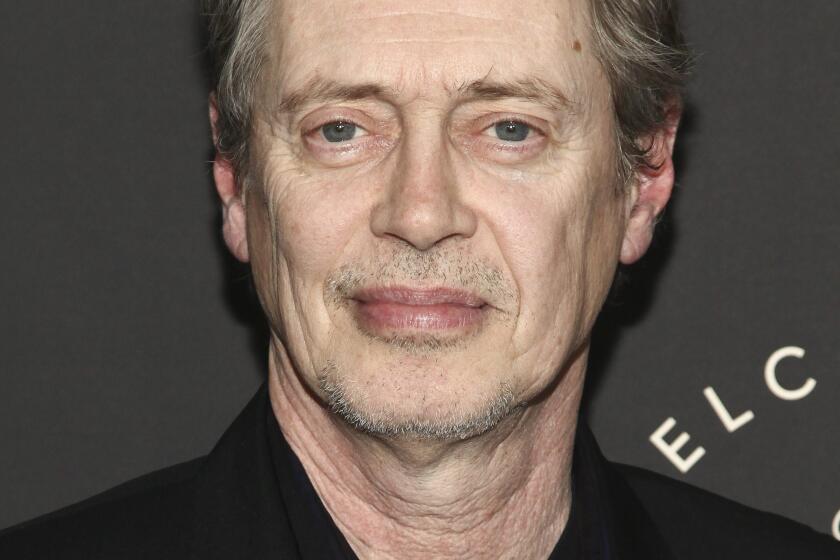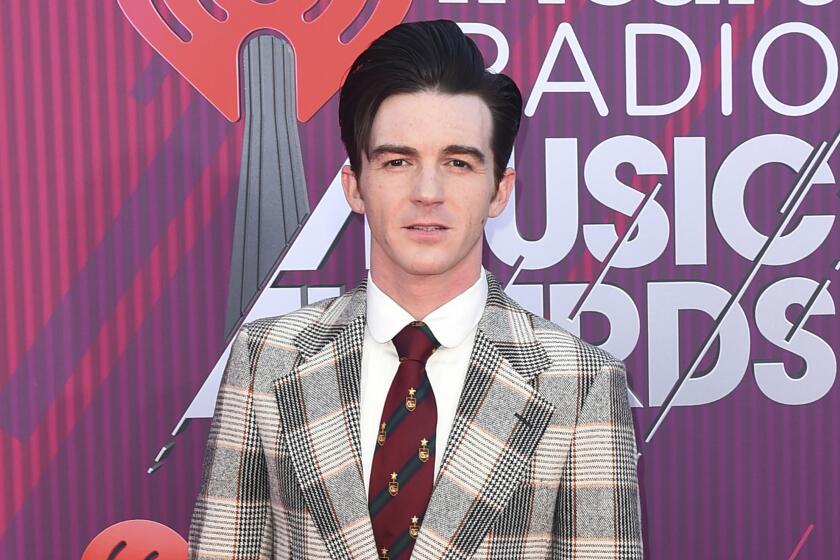COPTER FLIGHT ‘ROUTINE,’ SAYS ‘AIRWOLF’ PRODUCER
No unusual aerial maneuvers were involved in the helicopter crash that killed “Airwolf” stunt man Reid Rondell, says the show’s executive producer, Don Bellisario: “It was the most routine of flights. And that’s what’s got everybody so absolutely stunned.”
The Jan. 18 accident, which occurred in gently rolling terrain about 25 miles north of Los Angeles, also injured the helicopter’s pilot, Scott Maher, 36. He was hospitalized with facial cuts, a broken right ankle, a broken left clavicle and a spine injury.
“I don’t know if we’ll ever really know what happened--that’s up to the NTSB (National Transportation Safety Board) to decide,” Bellisario said late last week in one of his first interviews since the accident.
Al Crawford, an NTSB investigator, said Monday that he plans to check the remains of helicopter’s engine to see if it had malfunctioned prior to the crash.
He said that he briefly talked with Maher shortly after the accident, but hasn’t been able to question him in detail yet because the pilot seems to be suffering a form of amnesia caused by the trauma of the crash.
He said the board probably won’t issue a finding of the “probable cause” of the crash until June or July.
Bellisario, who created “Airwolf,” also is the co-creator and executive producer of CBS’ hit “Magnum, P.I.” In that series, as in CBS’ “Airwolf,” helicopters play a prominent role, although they receive greater prominence in the latter program.
A helicopter pilot himself, the 48-year-old producer didn’t personally see the accident that claimed the life of Rondell, 22. But he has seen film of the crash and talked to eyewitnesses, and gives this account of what happened:
The sequence being filmed used two helicopters, both Bell 205s, similar to the Huey helicopters used in the Vietnam War. The featured chopper of “Airwolf,” a heavily modified, twin-engine Bell 222, wasn’t involved in the scene.
One of the 205s, flown by Maher, pursued the other in a chase scene in which the two ships flew a race-track pattern over a small valley.
(Peter J. McKernan Jr., vice president of Jetcopters Inc. of Van Nuys, which owned the helicopter, said Maher is an Army Reserve helicopter pilot, holds an instructor pilot rating and has logged about 3,000 hours in helicopters, with 1,700 hours in Bell 205s.)
Veteran helicopter pilot David Jones, the show’s second-unit director and aerial coordinator, was on a nearby hill, filming the chase. The two ships usually were flying at altitudes of 200 to 300 feet, at speeds ranging from 69 to 80 m.p.h.
“They simply flew in a circle in front of the camera,” Bellisario said. There were no violent maneuvers, no hammerhead stalls and the like. “It wasn’t even a stunt,” he said. “You couldn’t call it a stunt. That’s just routine flying.”
The filming was done in an area “that we fly over all the time,” he said. “We’ve been doing it for a year and a half, and Scott has flown there before. So it’s not like we were flying in an unfamiliar area or where there were obstacles.”
At times, he said, the two helicopters might have gotten as low as 50 feet off the ground, “but that’s because it’s where the terrain rises up.” It was where the accident occurred.
During one pass, he said, Maher’s helicopter inexplicably hit a small grassy knoll that rose up about 30 feet in the valley’s center, then “flipped over, straight over. It didn’t go anywhere. It was upside down and on fire.
“Davey Jones left the camera and ran all the way down the hill. Nobody else was even close when he got there. He crawled under the cockpit--it was pouring fuel like rain inside the cockpit--and there was Scott, unconscious, hanging down by his seat belt.
“Davey got under him, punched his seat belt loose, and got him down. He rolled him down the hill. By then, some other crew members had gotten there. Davey tried to get back to the helicopter” to rescue Rondell “but it was burning too intensely.”
The Los Angeles County Coroner’s office said that Rondell was fatally burned in the crash.
Ironically, Rondell, who normally doubled for “Airwolf” star Jan-Michael Vincent, didn’t have to work on the day of the crash, Bellisario said. “They weren’t doubling Jan that day. But he wanted to work.”
For that reason, the third-generation stunt man was hired to portray a co-pilot in the helicopter flown by Maher, a Vietnam veteran who learned to fly after the war.
Bellisario said that when he learned of Rondell’s death, he immediately called the dead man’s father, Ron, also a stunt man. Speaking quietly, sadly, the producer said that the elder Rondell bore him no hard feelings:
“He was obviously broken up by it, but he told me, ‘You know, it goes with the territory.’ ”
Four days before the accident, Universal Studios, co-producer of “Airwolf” and “Magnum,” agreed to pay $610,000 to the widow of Robert Vanderkar, a camera technician killed in a 1980 helicopter crash while filming a “Magnum” episode in Hawaii.
(A National Transportation Safety Board report said the probable cause of that accident was pilot error.)
But in the four years between the two crashes, Bellisario said, there had been no aircraft accidents in either series, save for one bird strike that damaged the canopy of a Hughes 500 helicopter used in “Magnum.” It caused no injuries, he added.
Still, he’s aware that the two fatal accidents and the 1982 crash that killed actor Vic Morrow and two child actors during filming of “Twilight Zone--The Movie” tend to get greater scrutiny because all involved the entertainment business and helicopters.
Invariably, news reports about them raise questions about what safety precautions are taken during aerial action sequences.
“If something’s not safe, we’re not gonna do it. Period,” Bellisario said. “We do film stunts, we use explosives, we fly acrobatic things. But we do them as carefully and as planned-out as possible.
“And we shoot them in a way that they look more dangerous than they are.”
Another question, usually posed by non-fliers, boils down to whether helicopters are too inherently unstable for safe stunt work.
Again, no, said Baellisario. In his opinion, helicopters are completely safe if well-maintained and flown within their limits and those of the pilot.
“I still believe that,” he said. “Nothing has happened to change my mind.”
The complete guide to home viewing
Get Screen Gab for everything about the TV shows and streaming movies everyone’s talking about.
You may occasionally receive promotional content from the Los Angeles Times.



